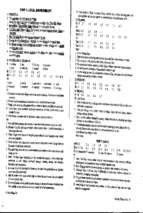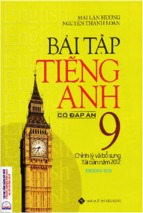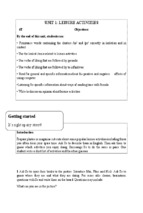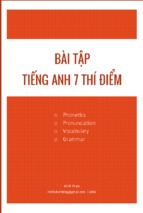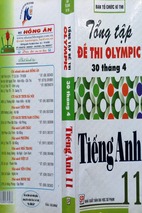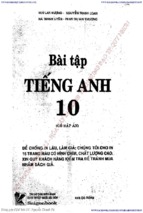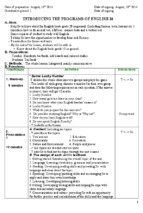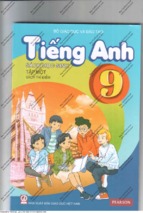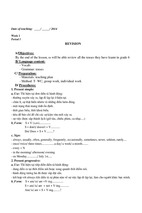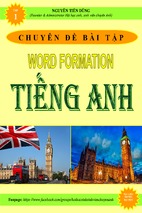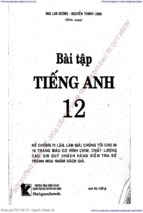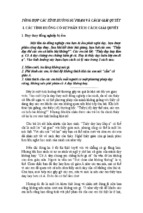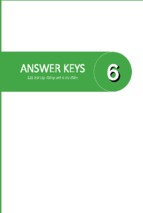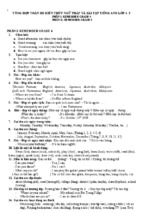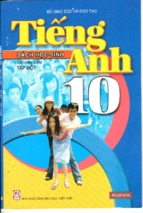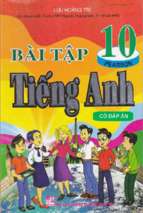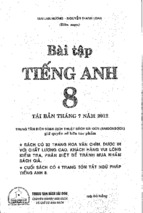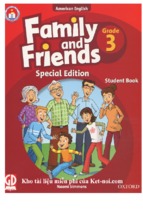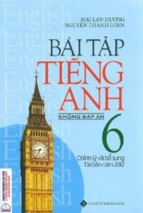Ngo Quyen High School
Bui Phu Xuan
SỞ GIÁO DỤC VÀ ĐÀO TẠO ĐỒNG NAI
Đơn vị : Trường THPT NGÔ QUYỀN
___________________
Mã số:
…………………..
SÁNG KIẾN KINH NGHIỆM
AROUSING STUDENTS’ INTEREST
IN READING
Người thực hiện: BÙI PHÚ XUÂN
Lĩnh vực nghiên cứu:
Quản lý giáo dục
Phương pháp dạy học bộ môn
Phương pháp giáo dục
Lĩnh vực khác:
Có đính kèm:
Mô hình
Phim ảnh
Phần mềm
Năm học: 2012-2013
***
1
Hiện vật khác
Ngo Quyen High School
Bui Phu Xuan
SƠ LƯỢC LÝ LỊCH KHOA HỌC
__________________________
I. THÔNG TIN CHUNG VỀ CÁ NHÂN
1. Họ và tên:
BÙI PHÚ XUÂN
2. Ngày tháng năm sinh :
3. Nam/Nữ:
02 / 09 / 1976
Nam
4. Địa chỉ: 103/71 Đường 30/4 Phường Trung Dũng Thành Phố Biên
Hòa - Tỉnh Đồng Nai
5. Điện thoại:
Cơ quan: 061.3829029
6. Fax:
Nhà riêng: 061.3819495
E-mail:
[email protected]
7. Chức vụ: Giáo viên
8. Đơn vị công tác: Trường THPT NGÔ QUYỀN
II. TRÌNH ĐỘ ĐÀO TẠO
- Học vị (hoặc trình độ chuyên môn, nghiệp vụ) cao nhất: Thạc Sỹ
- Năm nhận bằng: 2007
- Chuyên ngành đào tạo: Giảng Dạy Tiếng Anh
III.
KINH NGHIỆM KHOA HỌC:
- Lĩnh vực chuyên môn có kinh nghiệm: Giảng dạy bộ môn Tiếng
Anh
- Số năm có kinh nghiệm: 14 năm
- Các sáng kiến kinh nghiệm đã có trong 5 năm gần đây:
+ How to help students read more effectively
+ Five-minute activities
+ Pre-Listening activities
+ Strategies for Developing Reading Skills Skimming and
Scanning
2
Ngo Quyen High School
Bui Phu Xuan
TOPIC: Arousing Students’ Interest in Reading
***
I. Introduction:
T
oday English is considered as an international language. Many people in
Vietnam, as well as in other countries, need to use it as a communicative tool at work,
and in business. Despite the growing need for communicative English skills suited to
employment in the fast developing context of Vietnam and government policies stating
the will to upgrade delivery of English language within the education system, traditional
grammar translation teaching methods still prevail.
In order to become proficient in communicative English, students should be encouraged
to strongly participate in classroom activities using communicative approaches in which
teachers and students use the target language and students’ activities are the focus rather
than the teachers. As Littlewood (1984) stated, it is students who need to take more active
roles in the classroom in order to achieve communicative competence. Students need to
be led by appropriate teacher’s instruction on what and how to do communicative
classroom activities. Students should forget the idea that “silence is golden” which
although it may be correct in other situations, it is not in language learning. Students
should aim to use English in communication without any hesitation related to fearing
mistakes. They should try their best to adapt to these new approaches quickly so that they
can co-operate with their teachers to conduct learning and teaching effectively.
As Lewis (2002, p.47) points out, teachers are the main factor affecting the effectiveness
of students‟ learning because they “manage students and the environment to make the
most of opportunities for learning and practicing language”.
3
Ngo Quyen High School
Bui Phu Xuan
Lewis (2002, p.47) also explains that when implementing communicative approaches to
language learning, teachers “manage students and the environment to make the most of
opportunities for learning and practising the target language”. It is generally considered
(e.g. Jacobs and Hall, 2002; Lewis, 2002; Richards and Renandya, 2002; Richards and
Rodgers 2001) that one way to maximize such opportunities is through the use of
collaborative or cooperative learning activities in the classroom. Richards and Rodgers
(2001, p.192) describe collaborative learning as an approach in which learners use
cooperative activities such as working in pairs or small groups of learners, in order, as
Jacobs and Hall (2002, p.52-53) explain, to provide students with opportunities to share
their ideas, express their opinions and debate with each other. They remind us that the
benefits of incorporating cooperative learning activities into language teaching include
less teacher talk, increased student talk, more negotiation of meaning, a greater amount of
comprehensible input, a more relaxed classroom atmosphere, and greater motivation for
learning (p.53).
II. The importance of reading:
Reading is one important way to improve your general language skills in English for the
following reasons:
-
Reading helps you raise your knowledge and general culture.
-
Reading helps you learn a bunch of things that are often useful in school and
works of all kind.
-
Reading will also make you travel and use your imagination in ways you never
imagined.
-
Reading is a good way to transport yourself to the other side of the world or to a
fantastic universe full of strange people.
-
Reading is a nice way to relax and to experience lots of emotions
Harmer ( 1998: 68) also makes clear that reading is useful for many purposes. Reading
texts provide opportunities to study language: vocabulary, grammar, punctuation, and the
way we construct sentences, paragraph and the texts. Reading texts also provide good
models for English writing. Lastly, good reading texts can introduce interesting topics,
stimulate discussion, excite imaginative responses and be the springboard for wellrounded, fascinating lessons.
4
Ngo Quyen High School
Bui Phu Xuan
III. Aim of the topic:
Help teachers arouse students’ interest in reading
IV. Content of the topic:
As mentioned above, I find it essential to think of how each reading outcome could be
extended and what follow-up activities should be included in the reading class in order to
hold my students’ interest as well as enable them to practise and develop the mental,
affective and social processes necessary for everyday reading.
To show you how you can develop lessons from simple reading comprehension tasks,
this paper will focus on the following:
Pre-reading activities
Post-reading activities.
(English Book 12 was used to illustrate the types of the activities)
A. Type of Pre-reading Activities:
1. Brainstorming : students call out words or phrases to be put on the board or
OHP (whole class)
Write a single word in the centre of the board, and ask students to brainstorm all the
words they can think of that are connected with it. Every term that is suggested is written
up on the board with a line connecting it to the original word, so that the end result is a
“sun-ray” effect.
Let’s take Unit 1: HOME LIFE (English 12) as an example:
Teacher writes down the word FAMILY on the board and has students brainstorm all the
words they can think of:
HOMELIFE
5
Ngo Quyen High School
Bui Phu Xuan
The word FAMILY may produce something like the sketch below
cooking
look after children
mother
obedient
supportive
HOME LIFE
share
responsibility
dominate
happy
2. Game: HOT SEAT
Example: Unit 2: CUKTURAL DIVERSITY
Preparation
1. Prepare a list of five to seven words (e.g house/love/money/job/health/fame/children)
2. Draw a scoring table on the board, like this:
Team A
Team B
How it works
Ask your students to form two teams and have them move their chairs forward to
form two groups facing the board. After explaining the game and modeling the roles if
necessary, ask for one player from each team to move his or her chair forward again and
turn it to face his or her group. These players then sit in their chairs (now 'hot seats') with
their backs to the board.
Write the first word on the board, making sure the players in the 'hot seats' can't see it.
After you say 'Go!', the members of each team try to explain, describe, or define the word
in any ways so that their team mates in the “hot seat” can speak out the word. The team
whose 'hot seat' player first says the target word wins a point.
The two players in the 'hot seats' then swap seats with another member of their
respective teams. After writing the second word on the board, say 'Go!' again, and so on.
6
Ngo Quyen High School
Bui Phu Xuan
The game continues until all the words have been used, with the team having the most
points at the end of the game winning.
After finishing the activity, the teacher asks the students to discuss the question: “Which
of the above factors is the most important for a happy life? Why ?”
3. Game: Picture guessing
Example: Unit 5: Higher Education
Divide the class into two teams A and B
Show students a picture of Cambridge University covered with a piece of
paper.
Read 4 clues, one by one about the picture and ask students to guess what
the picture is about.
The first group to give the name of the picture exactly wins the game.
These are the clues:
a. It’s one of the most famous universities in the world.
b. It is the second-oldest university in the English-speaking world
c. It is a public research university located in Cambridge, England, United
Kingdom.
d. Its name begins with letter C
7
Ngo Quyen High School
Bui Phu Xuan
After finishing the activity, the teacher may ask the students to give some more
information about the University.
4. Game: What’s my job?
Example: Unit 6: Future Jobs
Divide the class into two groups.
Read 8 sentences describing the jobs.
Ask the students to listen and guess the jobs.
The first group to speak out the name of a job gets one point.
The group with more point is the winner.
Suggested sentences:
a. I serve and take care of passengers on an aircraft.
b. I take care of sick or injured people, usually in a hospital.
c. I help people who are hungry, I make things, and I wear a white uniform.
d. I repair machines, especially the engines of vehicles.
e. I examine people’s eyes and recommend and sell glasses.
f. I serve customers at the tables in a restaurant.
g. I prepare medicines and sell or give them to the public in a shop/store or in a
hospital.
h. I work for another person, deal with letters and telephone calls, type, keep
records, arrange meetings with people, etc.
KEY:
a. Flight attendant\
b. Nurse
c. Cook
d. Mechanic
e. Optician
f. Waiter
g. Pharmacist
h. Secretary
8
Ngo Quyen High School
Bui Phu Xuan
5. Sort out the words:
Example: Unit 10: Endangered Species
Divide the class into 4 groups.
Write the headings on the board. (amphibians and reptiles/wild
mammals/birds/insects)
Ask the students to look at the words in the box and put each word under
the correct heading.
Give an A0 sheet of paper to each group to write the words on, and then
stick these sheets of paper on the board.
The group with the most correct words wins the game.
frog
tortoise
monkey
ant
whale
leopard
butterfly
peacock
penguin
parrot
tiger
crocodile
mosquito
bee
elephant
spider
chicken
whale
dolphin
rhinoceros
snake
ostrich
lion
Suggested answers:
amphibians and
wild mammals
birds
insects
reptiles
tortoise
leopard
chicken
mosquito
frog
tiger
parrot
bee
snake
lion
penguin
butterfly
crocodile
monkey
peacock
ant
elephant
ostrich
spider
rhinoceros
whale
dolphin
9
Ngo Quyen High School
Bui Phu Xuan
B. Type of Post-reading Activities:
Post-reading activities encourage students to reflect upon what they have read. For the
information to stay with the students, they need to go beyond simply reading it
to using it.
As you realize, and as you will need to explicitly teach your students, the process of
actively engaging with a text does not end once you have completed the reading. To
truly foster the active reading and writing skills that will carry your students to
academic achievement in all content areas, you must guide students as they process the
information they have read and help them to systematically exercise their ability to
clarify, connect, summarize, and evaluate.
1. Discussion:
For example in Unit 1, after reading and finishing the tasks, students are asked to
work in groups of four and discuss some of the questions relating to the topic they’ve
learnt.
a. How many people are there in your family?
b. What are their jobs?
c. Do all your family members live together?
d. Who does household chores?
e. What is your responsibility in the family?
f. How do you think your family would change if your Mom went on vacation? Or
how do you think your family would change if your parent's roles were reversed,
for example if Mom went to work instead of your Dad?
Unit 3: Ways of Socializing
I have my students work in groups of 4 to discuss the different meanings of whistling
and hand-clapping in Vietnamese culture. Then I invite some students to report their
ideas in front of the class and give comments.
(e.g: In Viet Nam people whistle when they are excited about something; they want to
draw someone’s attention in very informal situations.
People clap their hands when they want to encourage someone; they want to attract
people’s attention, etc.)
10
Ngo Quyen High School
Bui Phu Xuan
Unit 11: Books
I have my students work in groups of four to discuss some of the questions relating to
the topic they’ve learnt. Then I invite some students to report their ideas in front of
the class and give comments.
a. What was your favourite book or story when you were a child?
b. What influence did the book have on you?
c. How many books did you read last year?
d. Which is your favourite book?
e. Do you usually read for leisure or for work purposes?
f. Do you prefer to read one book at a time, or several at once?
g. Which book has affected or influenced you the most so far?
h. Have you ever read a book that you got really scared of?
i. Is there a book that you have read more than five times?
j. Do you ever browse through to the last pages in order find out the ending?
2. Summary:
In some units I ask my students to write a summary of what they remember after
reading.
For example in Unit 10: Endangered Species
I encourage the students to work in groups of four or five to summarize the reading
passage by writing one topic sentence for each paragraph
At the end of the lesson I invite some groups at random to the front of the class to
read aloud their sentences and then I give feedback and comments.
3. Role–play:
In Unit 6: Future Jobs
I have my students work in pairs.
Student A plays the role of an interviewer and student B is a job applicant
Student A interviews student B
After 5 minutes I invite some pairs of the students at random to present their
conversation in front of the class.
Suggested questions:
-
What are your strengths?
-
What are your weaknesses?
11
Ngo Quyen High School
Bui Phu Xuan
-
Why do you want this job?
-
What's your ideal company?
-
What attracted you to this company?
-
What can you do for us that other candidates can't?
-
What do you know about our company?
-
What kind of personality do you work best with and why?
-
How many languages can you speak?
-
What are your salary expectations?
4. Writing:
Take Unit 15: Women in Society as an example
Divide the class into groups of four
Give an A0 sheet of paper to each group and ask them to write a short
paragraph about the typical life of a Vietnamese woman. and then stick
these sheets of paper on the board.
Suggested ideas:
Getting up
Shopping
Preparing meals
Doing housework
Looking after children
Teaching children
Taking children to school
Leaving for school
Reading books or surfing the internet to improve knowledge
5. Game: crossword puzzle
Sometimes I use crossword puzzle not only as a task to consolidate what students
have studied but also as a game to arouse students’ interest after a long reading
period.
Let’s take Unit 13: THE 22nd SEA GAMES as an example
I have my students work in pairs and use the clues to solve the puzzle and find the
key word.
12
Ngo Quyen High School
Bui Phu Xuan
1. a game played by two teams of five men or six women who score points
by throwing a large ball through an open net hanging from a metal ring:
____________
2. a game in which two teams use their hands to hit a large ball backwards
and forwards over a high net without allowing the ball to touch the
ground: ___________
3.
The two athletes are competing for the gold ____________.
4. having or involving a lot of energy
5. a number of people who do something together as a group: ____________
6. to try to be more successful than someone or something else : __________
7. a game played between two or four people on a special playing area which
involves hitting a small ball across a central net using a racket: ________
8. the noun of “successful” ___________
1
2
3
4
5
6
7
8
13
Ngo Quyen High School
Bui Phu Xuan
KEY:
1
2
B A S
K E T B A L L
V O L L E Y B A L L
3
M E D A
4
E N E R G
L
E T
5
T E A M
6
C O M P
7
E T E
T E N N
8 S U C C E
S
14
S
I C
I
S
Ngo Quyen High School
Bui Phu Xuan
V. Conclusion:
In conclusion, I strongly believe that the designing of some of the tasks for prereading and post-reading (e.g. brainstorming, games, sorting out the words, discussion,
summary, role–play, writing, crossword puzzle etc.) can enable the teacher to arouse
students’ interest as well as encourage them to use their background knowledge to
facilitate comprehension. The interest may be, in my opinion, very useful for learning a
foreign language in many ways. Just at the beginning of the lesson, the above-mentioned
activities more or less force them to take part in their lesson, reminding them of their
individual roles in the class. They no longer consider their English learning a burden. I
hope this relieved feeling will be comfortable with them throughout the lesson, helping
them grasp the meaning of the lesson more effectively.
***
15
Ngo Quyen High School
Bui Phu Xuan
REFERENCES
_______ __
English Book 12. Education Publishing House
Harmer, J. 1998. How to Teach English: An Introduction to the Practice of English
Language Teaching. England: Longman.
Lewis, M. (2002). Classroom management. In J. C. Richards, & A. W. Renandya
(Eds.), Methodology in language teaching: An anthology of current practice. New
York: Cambridge Unversity Press.
Littlewood, W. (1984). Foreign and second language learning. Cambridge: Cambridge
University Press.
Jacobs, G. M., & Hall, S. (2002). Implementing cooperative learning. In J. C.
Richards, & A. W. Renandya (Eds.), Methodology in language teaching: An
anthology of current practice (p. 52-53). New York: Cambridge University Press.
Richards, J. C., & Renandya, A. W. (2002). Technologies in the classroom. In J. C.
Richards, & A. W. Renandya (Eds.), Methodology in language teaching: An
anthology of current practice (p. 361). New York: Cambridge University Press.
Richards, J. C., & Rodgers, T. S. (2001). Approaches and methods in language
teaching: A description and analysis. New York, USA: Cambridge University Press.
______________________________
16

